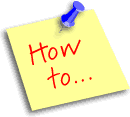
Write an Essay
Tips on writing that all-important A-grade college essay

|
Avoid padding in your essay |
||||||||||||||||||||||||||||||
|
Make your writing style much stronger by making every word count. Every word in your sentence, paragraph and document must earn its place. When you edit your document, assume you can delete around 20 percent of the words. Heres an example, where the original 84-word paragraph becomes 40 per cent shorter by cutting out wasted words.
Two key writing techniques can help you cut out padding. 1. Write most of your sentences in the Who-Does-What order. Using the Who-Does-What order means starting the sentence with the main subject, followed by a strong active verb. For example: |
||||||||||||||||||||||||||||||
|
Padded |
This idea is referred to by scientists as the Gridlock Theory. |
|||||||||||||||||||||||||||||
|
The Who-Does-What order places scientists first, followed by the verb refer. This shortens the sentence to: |
||||||||||||||||||||||||||||||
| Concise |
Scientists refer to this as Gridlock Theory. (7 words) |
|||||||||||||||||||||||||||||
|
The Who-Does-What order will cut out wasted words and encourage you to write your sentences with active verbs. 2. Write with specific nouns and action verbs close together. This technique takes the idea of Who-Does-What rule one step further. You may have noticed the Who-Does-What technique encourages you to start your sentence with the main noun and follow it with the most important verb. Nouns (the scientist, oxygen) are the content and verbs (proved, leaked) the actions in your writing. Adjectives add to or describe the content (the difficult experiment) and adverbs qualify the actions (the thoroughly reworked experiment). The other parts of the sentence glue together the nouns, verbs, adjectives and adverbs. Lets take a simple example: |
||||||||||||||||||||||||||||||
| Example: |
Lawson quickly criticized Lovell because of his unscientific investigation into the pollution in the river. |
|||||||||||||||||||||||||||||
|
Nouns: |
Lawson, Lovell, investigation, pollution, river |
|||||||||||||||||||||||||||||
|
Verb: |
criticized |
|||||||||||||||||||||||||||||
|
Adverbs: |
quickly |
|||||||||||||||||||||||||||||
|
Adjectives: |
unscientific |
|||||||||||||||||||||||||||||
|
Glue: |
because of his, into the, in the |
|||||||||||||||||||||||||||||
|
The key words for meaning are the nouns and the verb. We can write: Lawson criticized Lovells investigation [of] river pollution. The meaning is in the nouns (content) and verbs (action). Although you need adverbs and adjectives for more description we turned the noun river into an adjective (river pollution), they are not essential. The words of least meaning are the glue words those present to hold the other parts of speech together in a coherent sentence. To write a strong style you must keep use specific nouns and action verbs close together. This means cutting the glue words and questioning whether you need the qualifying adjectives and adverbs. If you need adverbs or adjectives, you must place them next to the words they qualify. This changes our original 15-word sentence to eight words. |
||||||||||||||||||||||||||||||
| Original |
Lawson quickly criticized Lovell because of his unscientific investigation into the pollution in the river. |
|||||||||||||||||||||||||||||
| Redraft |
Lawson criticized Lovells unscientific investigation of river pollution. |
|||||||||||||||||||||||||||||
|
The quickest way to learn this technique is to cut the glue words cementing your nouns and verbs together and placing any necessary adjectives and adverbs close to the words they qualify. Look how many words we can cut from this sentence: |
||||||||||||||||||||||||||||||
| Original |
What I propose to do, therefore, is to identify the equivalent conditions in the two experiments and then go on to explain the reasons for the importance of these conditions. |
|||||||||||||||||||||||||||||
| Redraft |
I propose to identify the equivalent conditions in both experiments and explain their importance. |
|||||||||||||||||||||||||||||
|
The redraft packs the nouns and verbs together and cuts out redundant words. |
||||||||||||||||||||||||||||||
| How StyleWriter Helps: StyleWriter has over a huge database of redundant words, passive verbs, hidden verbs and other style faults to help you cut the wasted words in your text and encourage you to write in the Who-Did-What order. Typically, running StyleWriter over your writing will help you cut the 30 percent of the padding from your writing. This produces an essay based on your information, ideas and arguments rather than the wordy habits so often found in academic writing. Click here to download a free copy of StyleWriter to help you edit you essay |